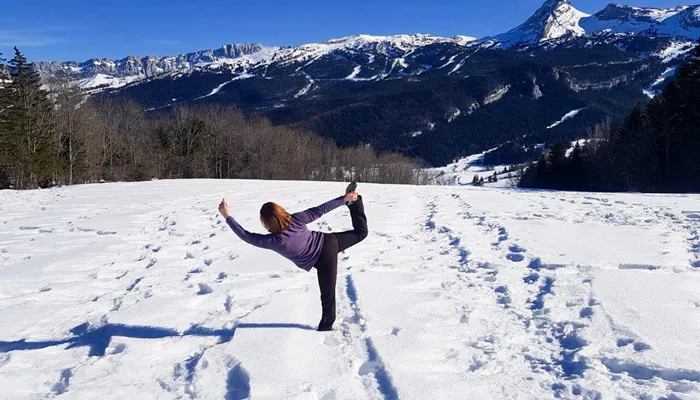Skiing demands strength, endurance, and coordination. After a long day on the slopes, your body feels the toll. Muscles tighten. Joints stiffen. Without proper post-ski stretching, recovery slows, soreness lingers, and risk of injury rises. This guide offers expert advice on how to stretch after skiing to reduce discomfort, enhance performance, and prepare your body for the next run.
Whether you’re a seasoned rider or just starting your journey, understanding recovery techniques is vital. For more tips, visit our detailed Skiing Guide.
Why Stretching After Skiing Matters
Skiing involves complex muscle engagement. Quadriceps control descents, hamstrings stabilize knees, calves manage edge control, and the core maintains balance. Without stretching, tightness accumulates. Fascia binds, blood flow decreases, and microtraumas may not heal efficiently. Stretching ensures oxygen-rich blood reaches fatigued areas and muscles return to optimal resting lengths.
Physiological Benefits of Post-Ski Stretching
Proper stretching has measurable benefits:
- Improves circulation
- Reduces muscle soreness (DOMS)
- Prevents stiffness and tightness
- Enhances flexibility and joint mobility
- Accelerates recovery
When to Stretch After Skiing
Timing affects results. Ideal window: 15 to 30 minutes post-session. Muscles are warm, pliable, and ready to lengthen. Avoid deep static stretches immediately after intense skiing. Start with light mobility, then progress to deeper holds.
General Guidelines Before You Stretch
- Stay hydrated—dehydrated muscles cramp more
- Wear warm, dry clothes post-ski to avoid muscle cooling
- Stretch in a quiet space—focus aids effectiveness
- Hold each stretch for 20–30 seconds
- Avoid bouncing—use smooth, sustained movements
How to Stretch After Skiing
This routine addresses every major muscle group involved in skiing. Follow it systematically to maximize relief.
1. Quadriceps Stretch
Muscle Group: Front of the thigh
How: Stand on one leg, pull opposite foot toward glutes, keep knees together. Hold onto a surface for balance.
2. Hamstring Stretch
Muscle Group: Back of the thigh
How: Sit on the ground, extend one leg, bend the other. Reach for the toes of the extended leg without rounding your spine.
3. Glute Stretch
Muscle Group: Buttocks
How: Lie on your back. Cross one leg over the other in a figure-four. Pull the uncrossed leg toward you.
4. Hip Flexor Stretch
Muscle Group: Front of hip
How: Lunge forward, keeping back leg extended. Push hips downward to open the hip flexors.
5. Calf Stretch
Muscle Group: Lower leg
How: Stand facing a wall. Place one foot behind, heel down. Lean into the wall until stretch is felt.
6. Lower Back Rotation
Muscle Group: Lumbar spine and obliques
How: Lie on your back. Bring one knee across your body. Keep shoulders grounded.
7. Core Activation Stretch
Muscle Group: Abdominals
How: Lie on stomach, hands under shoulders. Press upward, lifting chest while hips stay grounded (cobra stretch).
8. Shoulder and Arm Stretch
Muscle Group: Deltoids and triceps
How: Pull one arm across chest. Switch sides. Then stretch each tricep by bending elbow and reaching down behind the head.
Breathing Techniques During Stretching
Deep, diaphragmatic breathing enhances relaxation. Inhale through nose for 4 counts, exhale through mouth for 6. Match breath with movement—never hold your breath during a stretch.
Dynamic Stretching vs. Static Stretching
Dynamic: Involves movement (e.g., leg swings, arm circles). Best before skiing.
Static: Involves holding positions. Best post-skiing for recovery.
Common Mistakes to Avoid
- Skipping cool-down—leads to stiffness
- Overstretching cold muscles—increases risk of strains
- Ignoring smaller muscle groups—imbalances develop
- Not stretching regularly—one session isn’t enough
How Long Should a Post-Ski Stretching Session Be?
20 to 30 minutes is ideal. Focus on quality, not quantity. If time is limited, target the tightest areas first—quads, hamstrings, calves.
Tools That Help Recovery
Supplement stretches with these tools:
- Foam Roller: Loosens fascia, improves circulation
- Massage Ball: Targets deep knots
- Stretching Strap: Increases control and depth
Stretching Tips for Skiing Beginners
New to skiing? Your muscles are adapting to unfamiliar movement. Stretching is essential. Focus on hips and thighs, as they work hardest. Gradually build a routine. If unsure, follow a certified Skiing Guide for injury prevention tips.
Stretching After Different Types of Skiing
Alpine Skiing
Emphasize lower body—quads, hamstrings, glutes. Alpine turns stress these areas.
Cross-Country Skiing
Incorporate upper body and shoulder stretches. Poling engages triceps, back, and delts.
Freestyle or Park Skiing
Add neck, spine, and core stretches. Repeated impacts and rotations require spinal mobility.
Backcountry Skiing
Focus on hips, calves, and shoulders. Uphill treks strain smaller muscle groups too.
Benefits of Making Stretching a Habit
Consistent stretching enhances long-term performance. Flexibility improves. Recovery shortens. Balance becomes easier. Injury risk drops. It’s a foundational habit for all skiers—novice or elite.
Integrating Yoga and Skiing Recovery
Yoga complements post-ski recovery. Poses like downward dog, pigeon, and seated twist target ski-stressed areas. Practice a 15-minute flow post-ski. It calms the nervous system and aids muscular repair.
Conclusion
Stretching after skiing isn’t optional. It’s an essential part of performance and protection. A structured approach minimizes injury, supports mobility, and keeps your body slope-ready. Prioritize post-ski care, and skiing becomes more sustainable and enjoyable.

